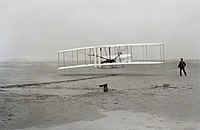
Photo from wikipedia
Different centers of mass (CMs) of a diesel engine were set to find their effects on the vertical vibration of an engine. To understand the effects and reduce vibration during… Click to show full abstract
Different centers of mass (CMs) of a diesel engine were set to find their effects on the vertical vibration of an engine. To understand the effects and reduce vibration during sensing, we changed the location of the CM of the engine and performed a simulation to obtain data such as the vertical movements, velocity, torque, and acceleration of the vertical springs of isolators. The data showed that a 0.1 mm higher CM than the original CM of the engine reduced the amplitude of the vertical vibration by 4.35% and the velocity of the vertical vibration by 45.7% at a fixed rotation speed of the engine of 1000 revolutions per minute (rpm). Different CMs did not significantly affect the torque and acceleration. Instead, the phase of the vertical movements, the velocity, and the acceleration significantly changed with the CM in the simulation. The results imply that the CM needs to be considered in the design of the vibration isolation system of a diesel engine to increase the accuracy and lifetime of sensors used in vehicles under severe vibration conditions.
Journal Title: Sensors and Materials
Year Published: 2021
Link to full text (if available)
Share on Social Media: Sign Up to like & get
recommendations!